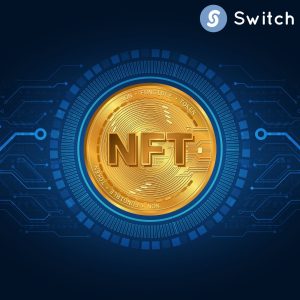
The Tokenization of Real-World Assets: Unlocking New Investment Opportunities
The tokenization of real-world assets has emerged as a groundbreaking concept in finance and blockchain technology. By representing tangible assets such as real estate, art, stocks, and commodities as digital tokens on the blockchain, tokenization offers a transformative approach to investing. This article delves into the concept of asset tokenization, its underlying mechanisms, potential benefits, and the impact it may have on the investment landscape.
I. Understanding Asset Tokenization
- How Tokenization Works
Asset tokenization is transforming the ownership of a tangible asset into digital tokens using blockchain technology. Each token represents a fractional ownership share in the asset, allowing investors to buy and trade small portions of high-value assets. Smart contracts govern the issuance and management of tokens, ensuring transparency and automated execution of transactions.
- Types of Assets Tokenized
Virtually any valuable asset, including real estate properties, commercial buildings, luxury items, artwork, collectibles, precious metals, intellectual property rights, and more, can be tokenized. By enabling fractional ownership, tokenization enhances accessibility to traditionally illiquid or high-entry barrier assets.
II. Benefits of Asset Tokenization
- Enhanced Liquidity
Traditionally, investing in real-world assets involved long holding periods and limited liquidity. Tokenization allows investors to trade these assets 24/7 on secondary markets, unlocking new liquidity and exit opportunities.
- Fractional Ownership and Accessibility
Asset tokenization democratizes investing, enabling fractional ownership of assets. Individuals can now invest in premium properties or high-value assets with smaller capital contributions, thus broadening investment participation.
- Diversification
Tokenization allows investors to diversify their portfolios across different asset classes quickly. Fractional ownership of various assets helps mitigate risks associated with single-asset investments.
- Transparency and Security
Blockchain technology provides immutable records of ownership and transactions, ensuring transparency and reducing the risk of fraud. Investors can track the history of the asset, ensuring authenticity and provenance.
- Lower Costs
Traditional asset transactions often involve intermediaries, resulting in high fees and lengthy settlement times. Tokenization streamlines the process, reducing administrative costs and facilitating faster transactions.
III. Real-World Applications of Asset Tokenization
- Real Estate Investment
The process of asset tokenization has the power to transform the real estate sector by enabling investors to access the highly profitable property market with smaller investments, allowing them to explore global real estate opportunities.
- Art and Collectibles
Tokenization allows art collectors to digitize their valuable collections, enabling fractional ownership and creating a liquid secondary market for trading high-value artworks.
- Investment Funds and Funds Management
Tokenized funds can expose investors to diversified portfolios managed by professional fund managers. Investors can efficiently monitor their holdings and participate in various investment strategies.
- Intellectual Property and Royalties
Tokenizing intellectual property rights and royalties empowers creators to monetize their work while allowing investors to share in revenue.
IV. Regulatory Considerations
The rise of asset tokenization raises important regulatory questions. Depending on their underlying nature, securities laws, and investor protection, different jurisdictions may impose varying regulations on tokenized assets.
V. Challenges and Risks
- Regulatory Compliance
Navigating complex and evolving regulatory frameworks poses challenges for issuers and investors seeking to tokenize assets.
- Market Liquidity and Pricing
Tokenized assets’ liquidity and pricing may be subject to market demand and underlying asset performance, potentially leading to price volatility.
- Custody and Security
Secure custody solutions are essential to safeguarding tokenized assets, as digital wallets may be susceptible to hacking or theft.
VI. Future Outlook
The tokenization of real-world assets represents a significant paradigm shift in the financial industry. As blockchain technology matures, asset tokenization has the potential to disrupt traditional economic systems, democratize investments, and create new avenues for wealth creation.
Asset tokenization represents a transformative leap towards unlocking new investment opportunities, enhancing liquidity, and broadening investor access to a diverse range of real-world assets. The fusion of blockchain technology and traditional asset ownership brings about tokenization, which has the potential to revolutionize how we invest in and engage with high-value assets. As the industry evolves, navigating regulatory challenges, ensuring security, and fostering investor trust will be pivotal in realizing the full potential of asset tokenization in the global economy.

